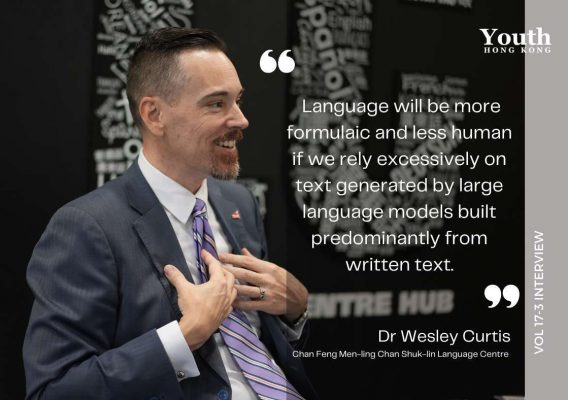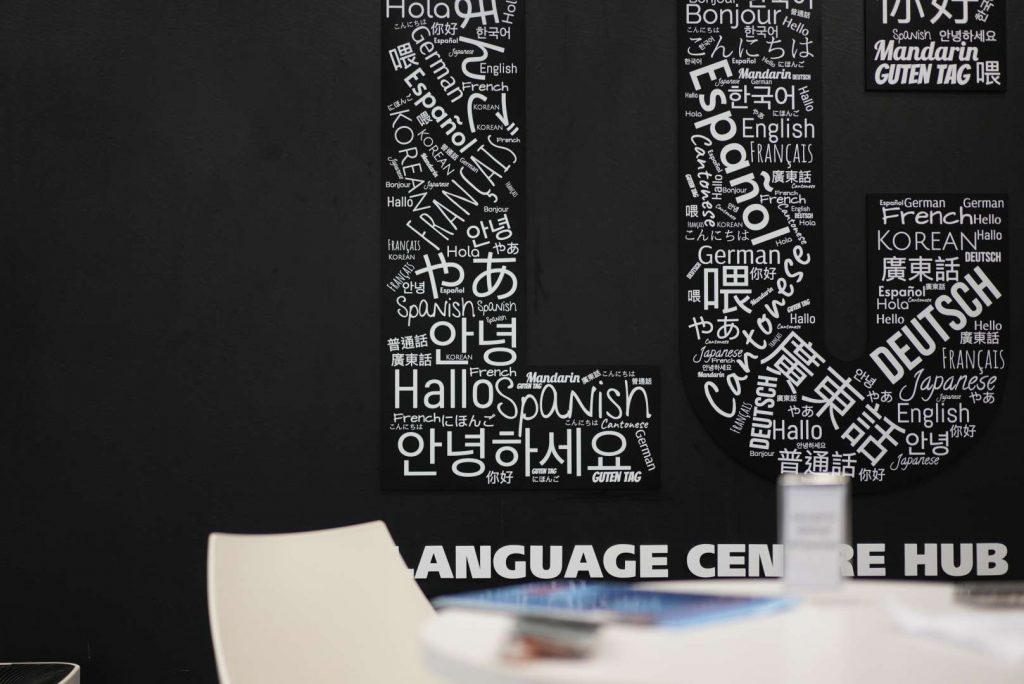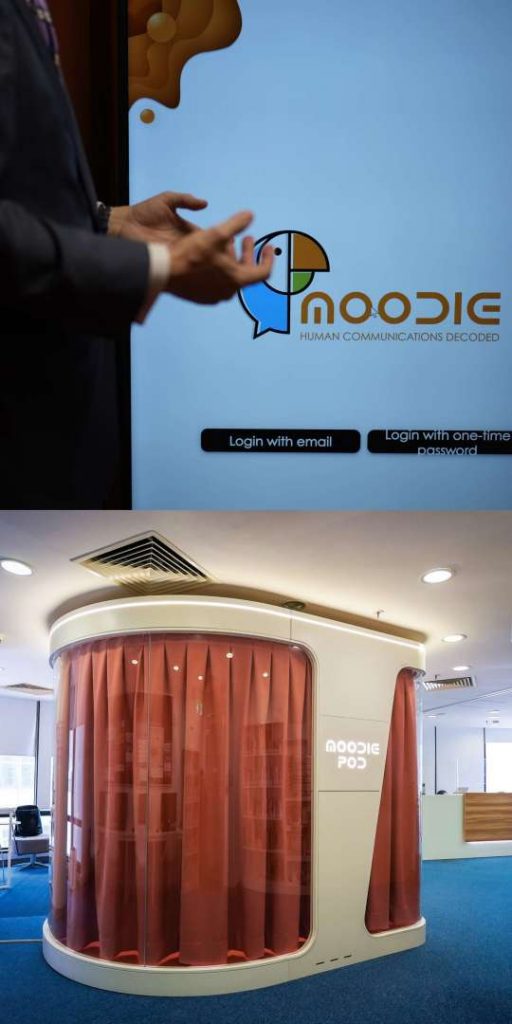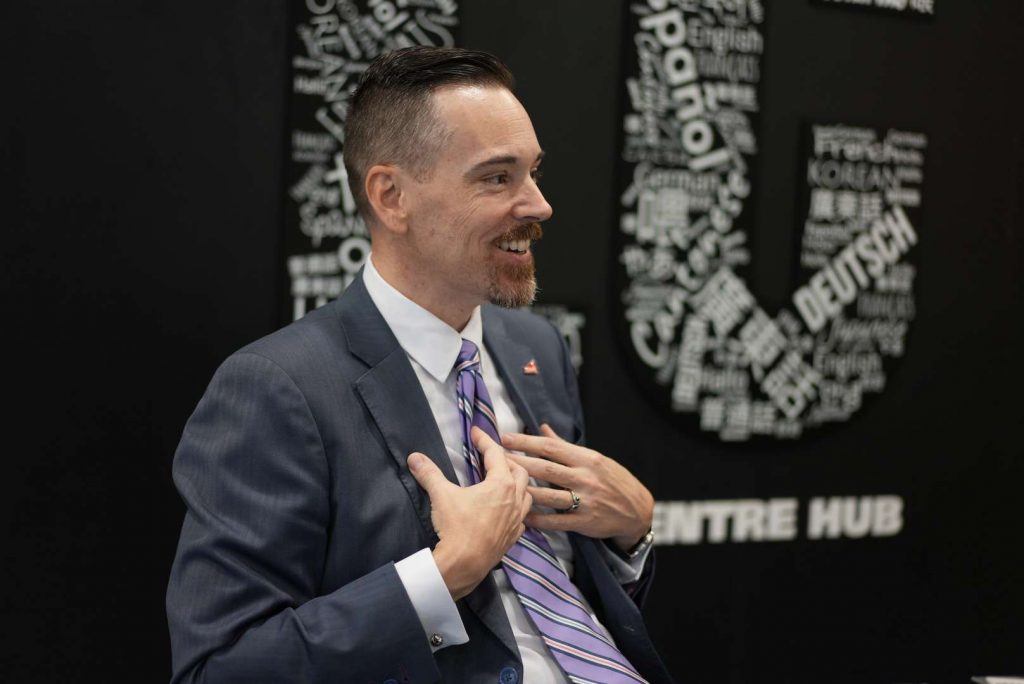When debates flare over traditional language learning versus AI, Dr Wesley Curtis reminds us not to forget the human side — the power of language to adapt, connect and shape us.
When Dr Wesley Curtis began learning Spanish as his second language in college, he didn’t realise how profoundly it would amaze him and unlock the door to a rich new culture. Motivated by the desire to connect with a new culture and history, he dedicated more time to Spanish than to his major courses, learning not only vocabulary and grammar, but also how people from different cultures think in fundamentally different ways.
Multilingualism and Multiculturalism
During an interview, Dr Curtis, now Head of the Chan Feng Men-ling Chan Shuk-lin Language Centre (the Language Centre) at the City University of Hong Kong (CityU), explains his philosophy to Youth Hong Kong. Dedicated to inspiring students to equip themselves with language skills in an increasingly globalised and fast-changing society, he says the Language Centre promotes multilingualism and multiculturalism. This not only enriches students’ communication skills but also fits well with Hong Kong’s vibrant demographic landscape.
The Centre’s English Language Mentoring Scheme pairs local students with exchange or international students to practice their English and engage in cultural exchange. For students eager to learn minority languages not offered in credit-bearing courses, the Centre has piloted a Language and Culture Tandem Scheme whereby exchange students serve as facilitators for local students. The programme had over 100 participants.
Among all the elective courses offered at the Language Centre, Dr Curtis says Korean and Japanese are by far the most popular. He thinks this is due to geographic proximity and the cultural impact of K-drama, J-pop and K-pop. “We’ve recently seen an increase in interest in Korean, and we think that the Squid Game series was instrumental in that,” he continues. “In both credit-bearing and non-credit courses, our goal is to use cultural and digital resources.” The Language Centre also has virtual reality software subscriptions for languages not currently offered, including Turkish, Arabic, Russian, and Ukrainian.
“Second language acquisition research tells us that the most successful language learners almost always demonstrate high motivation,” he goes on to say. “Sometimes students come with pre-existing motivations, but I think the most important thing is not whether they identify that motivation before or after they enrol, but that they find it.”
Tradition Meets Technology
Training for students extends beyond second language learning. The Language Centre uses the Moodie Pod, a groundbreaking innovation from Datality Lab Ltd., a recipient of CityU’s HK Tech 300 Angel Fund investment, that is designed to analyse communication and presentation skills. Students can book a 30-minute session in the Pod for practising presentations or engaging in mock job interviews with virtual avatars.
The Language Centre is committed to innovative language teaching and learning, yet Dr Curtis also places significant value on traditional teaching methods that involve in-person interactions and active discussions between students and teachers. For example, he notes the way in which a spontaneous question raised in an in-person language class can result in a teacher’s answer that benefits the entire class. Replicating such dynamics is a challenge for language learning apps.
In a world increasingly dominated by AI, he addresses a pressing concern shared by many leaders: Does conventional language learning still hold its value when technology appears to be a super mediator between languages? For Dr Curtis, it is not an either/or proposition.
Reflecting on the variety of mobile and online tools available to language learners, he says, “While the use of mobile applications and software for language learning has value, this does not mean that classroom-based instruction no longer has a place. In fact, language teaching has always embraced innovation, and it’s natural for communities to adopt more effective teaching and learning methods. However, I believe there is intrinsic value in learning languages.”
He explains that oral communication benefits from the non-verbal cues and context provided by in-person interactions, and this, in turn, impacts the continuing development of a language itself. “Large language models primarily draw on written texts,” Dr Curtis notes. “We know that people don’t speak the way they write. They use fillers, pause frequently, and often jump between ideas before returning to their original thought. In contrast, written texts tend to be more linear.” He warns of the risk of language becoming more formulaic and less human if we rely excessively on text generated by large language models built predominantly from written text.
He also points out that language changes continuously and relies on humans to create new terms and inject energy into it. Such change happens fast, and it’s not known how fast large language models might change. “The only language that is not changing is a dead language, so within the context of language, change is a good thing. It means your language is alive, it’s thriving, it’s vibrant.” For example, he mentions how Gen Z and Gen Alpha created “skibidi,” a new nonsense word popularised by a viral YouTube series.
Keeping Language Human
Dr Curtis acknowledges that technology-enhanced online language tools and digital resources can boost classroom engagement and enhance students’ efficiency in language acquisition. However, he emphasises that the language learning ecosystem still needs human involvement to choose the sources from which technology draws. Without this human touch, language may fail to preserve cultural uniqueness and convey nuanced feelings.
He then mentions how philosopher Wilhelm von Humboldt thought a language draws a circle around the people who speak it. “Each language, to some extent, represents the ability to convey unique ways of thinking, doing and living in respective cultures,” Dr Curtis says, reflecting on von Humboldt’s point that learning another language means stepping outside one’s original circle and entering another, thereby acquiring “a new standpoint.”
He goes on to give an example of the different ways of thinking in English and Spanish. “In English, we say to ‘make a decision,’ whereas in Spanish, we say to ‘take a decision.’” Dr Curtis explains that making can imply inventing something that did not previously exist, whereas taking can imply drawing upon an infinite number of pre-existing decisions. These different collocational patterns, for him, reflect different linguistic ways of conceptualising actions.
He says that it is an educator’s responsibility to facilitate the motivation needed to learn languages. He believes such motivation can continue to evolve and inspire individuals to connect with other languages and cultures at a time when new technology is transforming language learning patterns. However, he underlines a key question: not which technologies educators should adopt but which tools can most effectively facilitate learning. In Dr Curtis’s view, understanding human needs is the essential compass for achieving goals while navigating a new era of language learning.
“After all,” he points out, “speaking a language means communicating with living, breathing, thinking and feeling beings. We want to relate and interact with other living, thinking, feeling beings who experience life in the same way as ourselves. They can feel, they can hurt, they can be happy, they can be sad. Language is the tool for that interaction.” ■





